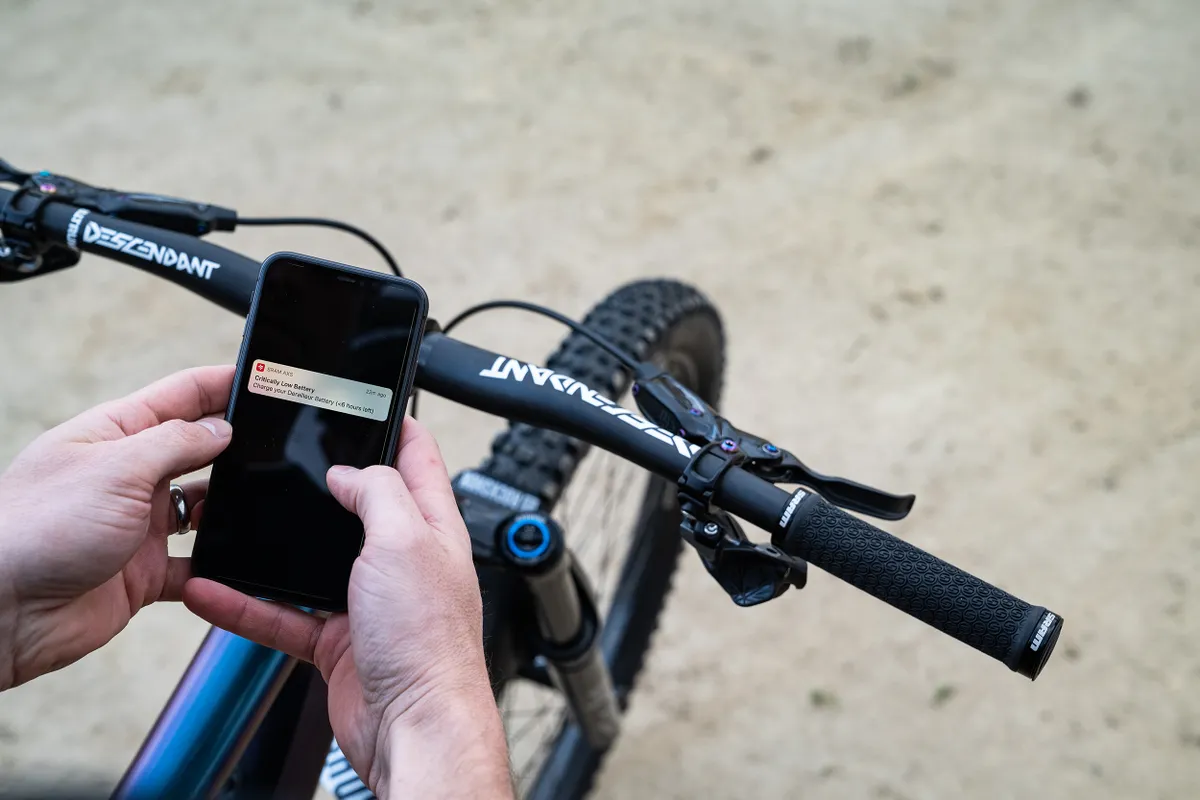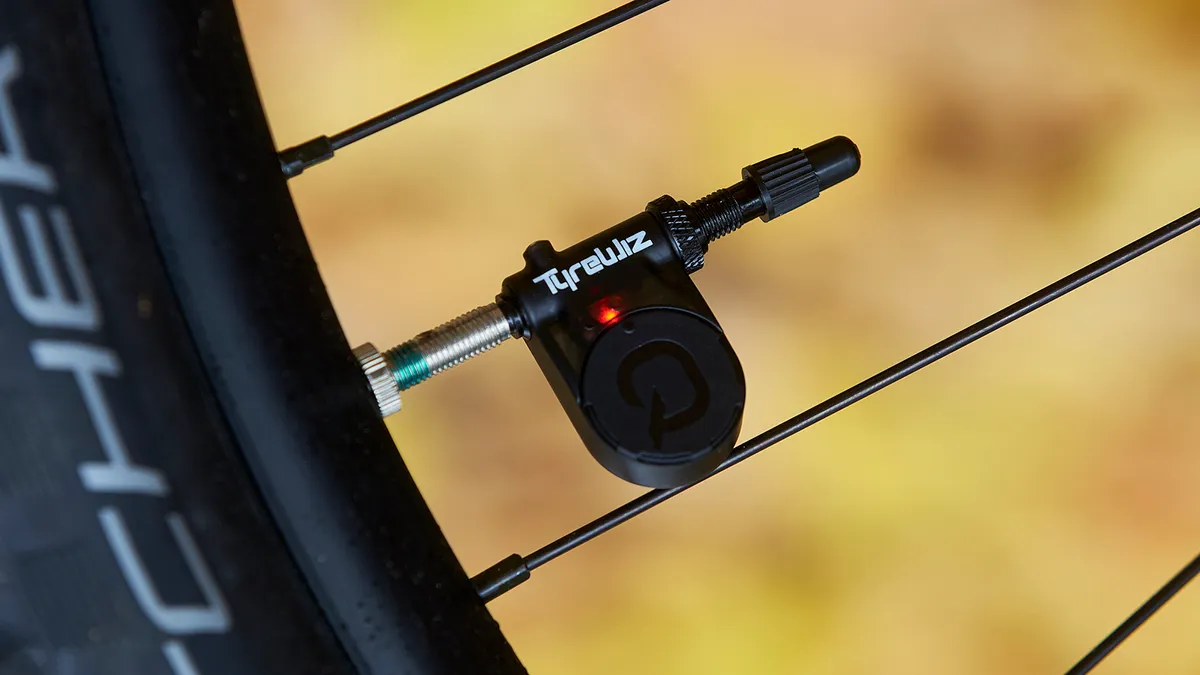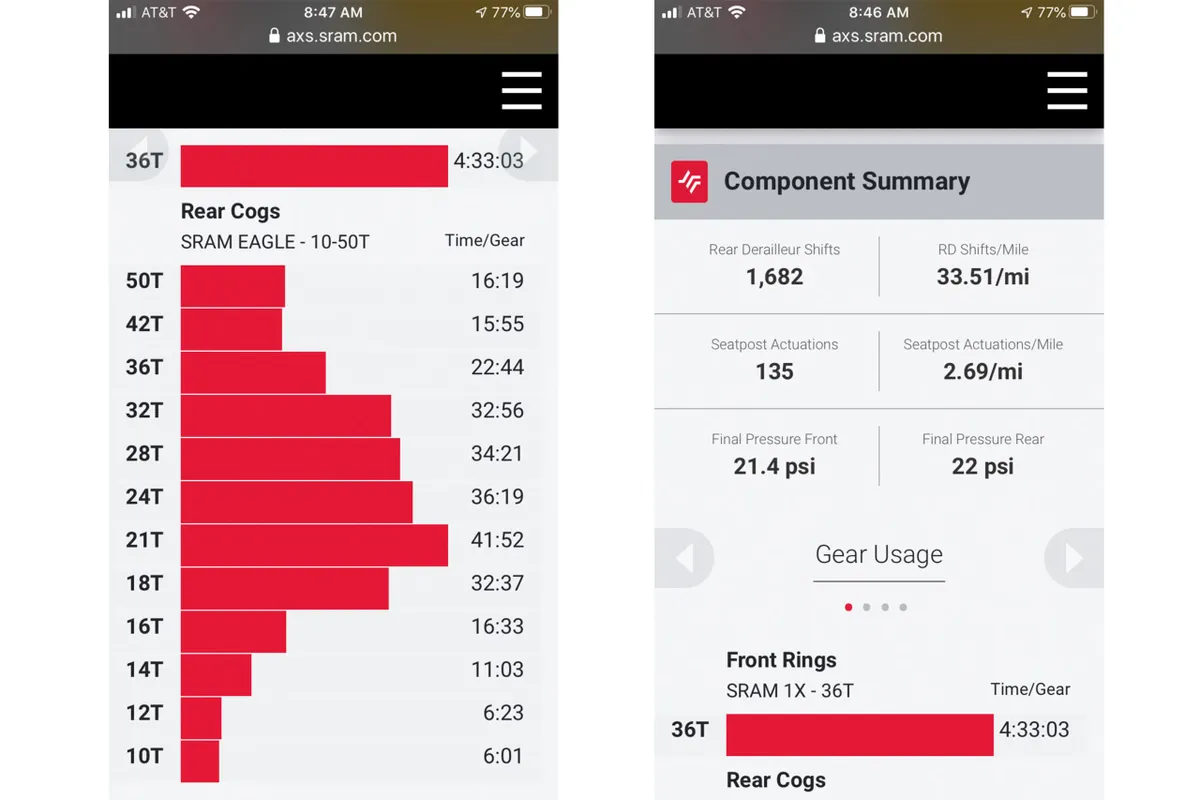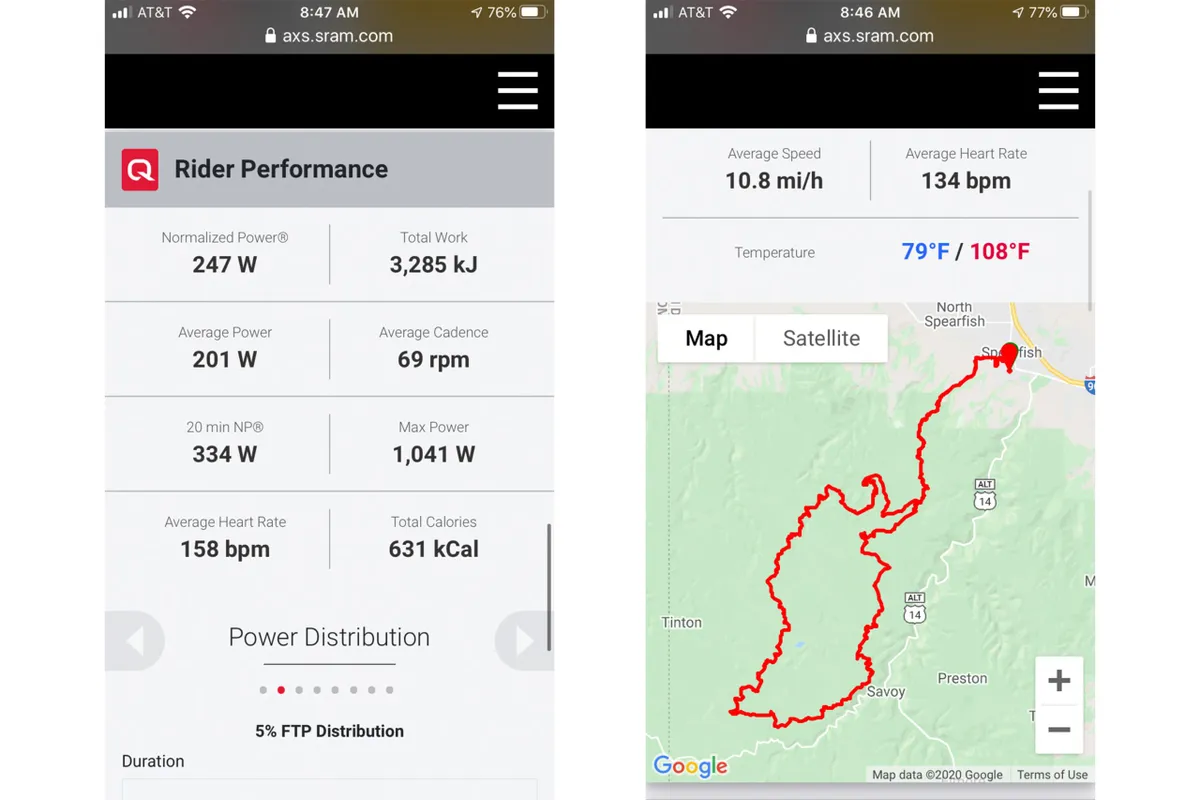SRAM has announced a new web tool for users of its road and mountain bike AXS wireless groupsets and older 11-speed-era RED eTap components to analyse enriched ride information online.
This new data will be visible alongside more standard ride data such as speed, distance, GPS tracks, power and heart rate.
Riders with SRAM’s wireless electronic drivetrains will be able to access and evaluate data about what gear ratios they’re using and how often they’re shifting.
Users of the SRAM AXS app will also be able to receive push notifications on a smartphone for low battery warnings about their AXS/eTap system.

Riders using Quarq’s TyreWiz tyre pressure monitor will also be able to review tyre pressure data for the entirety of a ride.
SRAM says that the information gleaned from this new tool can be used to help riders make adjustments to their bike setup and/or how they ride.
The data might indicate that a rider needs a lower bottom gear, for example, or that they are cross-chaining too much and might be able to make efficiency gains with more careful gear selection.
At launch, the AXS Web tool will be compatible with data captured on Garmin GPS devices only, but SRAM says that Wahoo compatibility is in the works.
SRAM also notes that the AXS Web tool can use data from any power meter, not just Quarq devices.
How can I use this new data?
With so many aspects of cycling measurable, it seems like everyday cyclists are being bombarded with a never-ending stream of new information. What’s less clear though is exactly how we can put it all together to use.
As Seb Stott noted in his review of the TyreWiz, being able to accurately monitor tyre pressure is genuinely useful for riders who are testing equipment and want to ensure consistency, but its utility beyond that is perhaps still more nebulous at this point.

Quarq founder, Jim Meyer, says the AXS Web tool was built “as a learning tool and to show people how their bike is working for them” and that “it’s like getting a coach for free”.
A good coach comes with specialist training and knowledge not just about how to digest ride information, but how to apply it to an athlete going forward, and how this tool enables end users to do that is currently less clear.
This isn’t necessarily a new phenomenon; many (if not the vast majority of) cyclists who have purchased power meters simply monitor how many watts they’re producing on a general day-to day basis, rather than ever using them to construct or perform detailed training plans.
It’s somewhat similar to how Garmin Vector power meter pedals provide a lot of detailed information on pedalling technique, but there’s little awareness of how everyday riders can use it to improve their performance.
That said, this type of thing is always going to be of interest to certain types of riders. And even if the usefulness isn’t immediately obvious, it's great to see a brand making this data easily and (perhaps more importantly) freely available to consumers.



